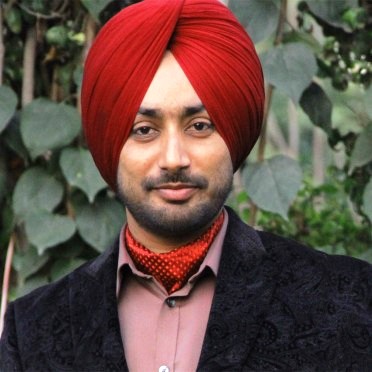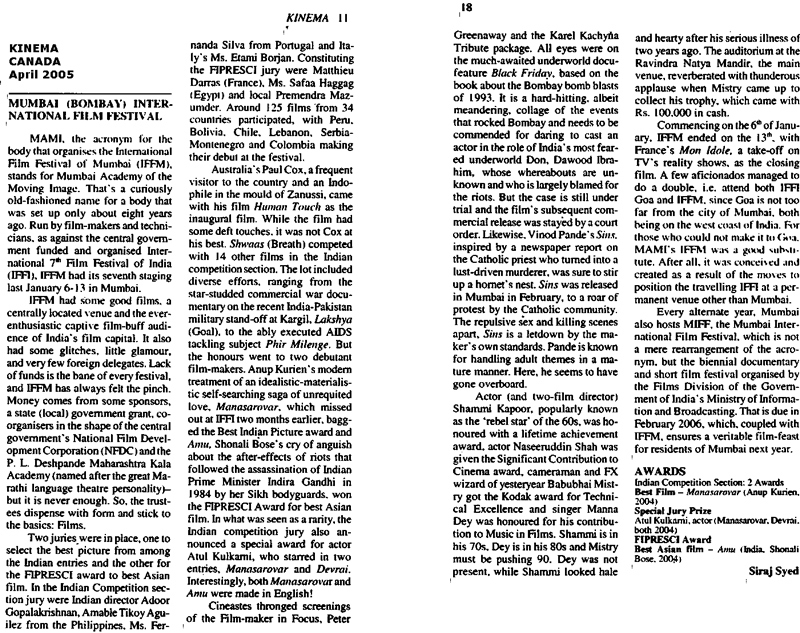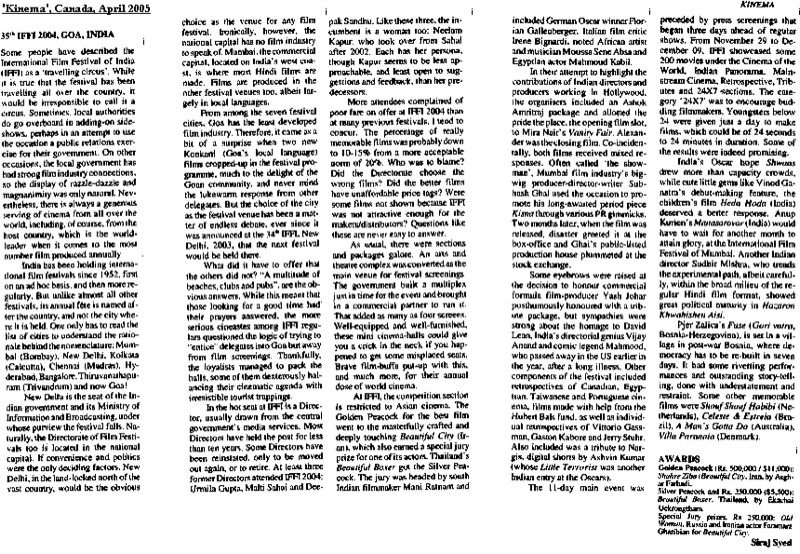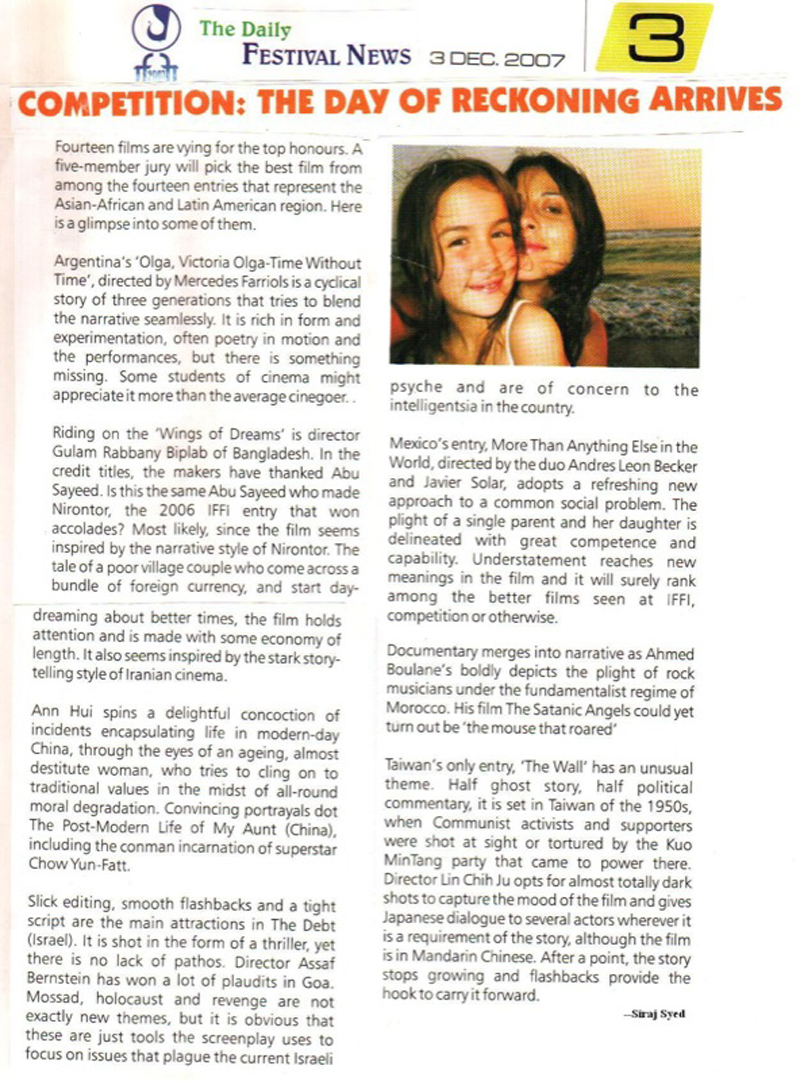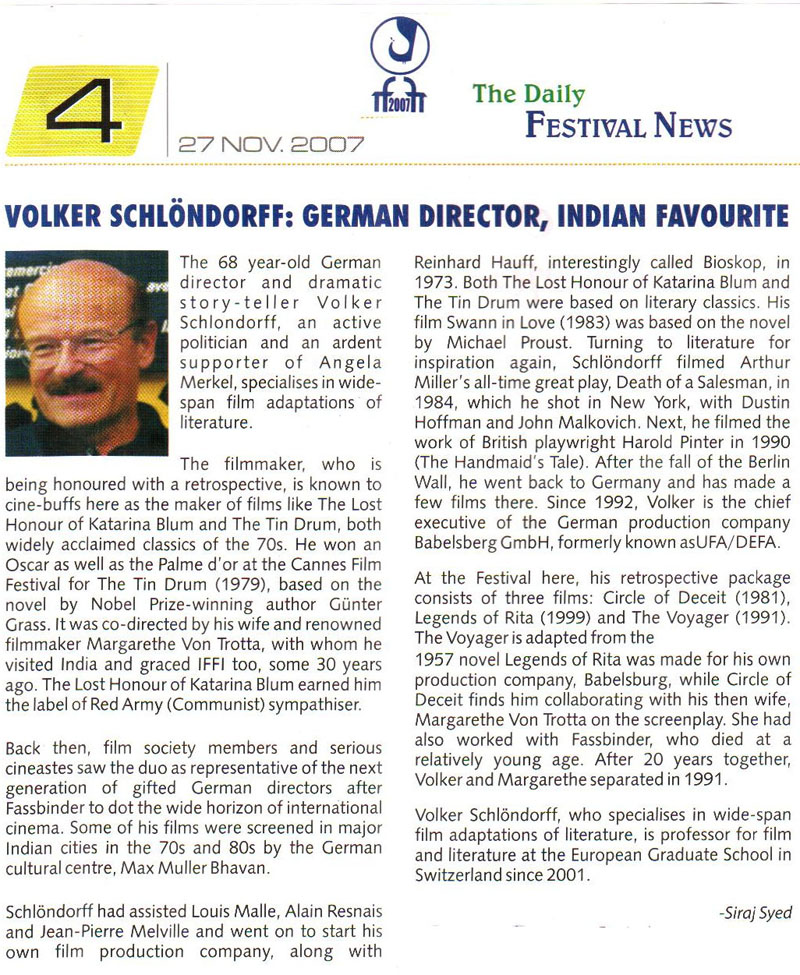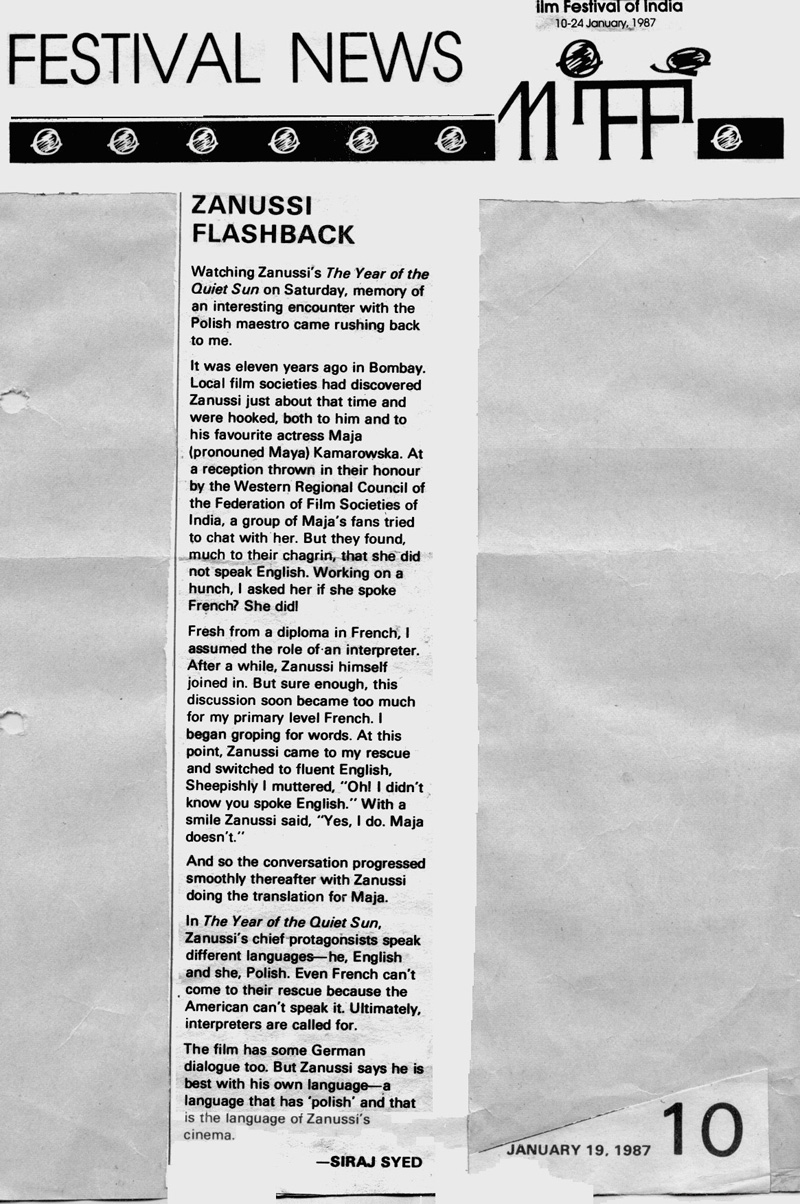|
|
||
|
Pro Tools
FILMFESTIVALS | 24/7 world wide coverageWelcome ! Enjoy the best of both worlds: Film & Festival News, exploring the best of the film festivals community. Launched in 1995, relentlessly connecting films to festivals, documenting and promoting festivals worldwide. Working on an upgrade soon. For collaboration, editorial contributions, or publicity, please send us an email here. User login |
The Black Prince who walked the Red Carpet at Cannes
The Black Prince who walked the Red Carpet at Cannes Very little is known about Maharaja Duleep Singh, the last Maharaja of Punjab with his capital at Lahore, who is said to have gifted the invaluable Koh-i-Noor diamond to Queen Victoria, while a young boy. Time and again, a lobby is raised in India to try and get it back from Britain, only to fizzle out. Dalip Singh remains an enigmatic figure, a missing chapter from India’s colonial history. All that is set to change with oncoming release the film The Black Prince, which was shown at Cannes earlier in the year, when, on the Red Carpet, were the film’s team, including lead actor Satinder Singh ‘Sartaaj’. Walking the Red Carpet at Cannes, the diminutive Satinder felt ten feet tall, for he was told that no turbaned Indian Sikh had ever walked those steps before him. He also recalled that France had a special place in Duleep (also pronounced Dalip) Singh’s life. “Dalip met Queen Victoria, who named him The Black Prince, for the last time, at Grasse, the French town so close to Cannes.” Dalip had been exiled from both India and England by the British Queen. “It is in France that a bust of Dalip Singh’s father, emperor Ranjit Singh, famously known as ‘Sher-e-Punjab’ was installed, at Allard Square, in St Tropez, in the south of France, less than a 100 km from Cannes, in 2016. (French General Jean Francois Allard served in the Maharaja’s army in the nineteenth century). And, lastly, Dalip Singh met his tragic end in a Paris hotel room, in 1893, aged under 56. So, you see, there is a strong French connection.”
You would be forgiven to think that a singer, poet and lecturer, with Master’s and Doctorate degrees in music and Sufi poetry, and a diploma in Persian language, but not a minute’s experience in theatre or cinema, would be chosen to play the titular role in an epic of the dimensions of The Black Prince, wherein he spans the royal’s life from age 15 to 55. In real life, Sartaaj is 35, exactly midway. But it was an uncanny resemblance to the king of a bygone era that prompted his vast fan following among British and American Sikhs to suggest his name to Brillstein Entertainment Partners (producers of 12 Years a Slave) for the part. Not much later, he would be mouthing dialogue like, “What are the British? A bunch of Fagins? What did they do to a child? They tore off his heart! And decapitated a great kingdom....” Satinder goes on to recite one of the most impactful scenes in the film, when the now not so young Dalip discovers the bloodshed by the British in his Kingdom, which was usurped by treachery, and the Koh-i-Noor obtained by him likewise.
Two issues are bound to be of keen interest to audiences: First, what was the truth of the Koh-i-Noor ‘gift’? Was it gifted to Queen Victoria by the boy who was made king at age five, later converted to Christianity and then whisked away to England, to live in glorious exile? Or, was it obtained by guile, a well-established trait of British colonials of that era? Answers Satinder, “We have a 15 second TV promo coming out in a couple of days, that just frames this question, with two polarised stands: Jind Kaur (Dalip’s mother, played by Shabana Azmi) insists it was taken by deceit, while Queen Victoria insists it a gift. For the rest, watch the film,” he plugs. Secondly, was Maharaja Dalip Singh an unconcerned, cold, distant spectator as the Indian independence movement began to build up in right earnest, circa 1857? “On the contrary, Dalip Singh should be acknowledged as the first Indian ‘ruler’ to plan the overthrow of the British. Much before the militant leader, Netaji Subhashchandra Bose, and the Father of the Nation, Mahatma Gandhi came on the scene, he had started to ally with the Russians in a still-born plan to invade India through Afghanistan. Well, it did not materialise, but it is necessary to accept that he tried his best.” The plans were discovered by British spies, and thus quashed. Asked about his working equation with director Kavi Raz, Satinder revealed, “In some sense, Kavi’s life has been a bit like Dalip Singh’s. He was born in Punjab, the family migrated to Britain, where he played hockey, and he has now been living in America for over 30 years, working in both Hollywood and Bollywood. Kavi and I share similar roots, and he used to explain things in Punjabi.” Among the niceties and nuances of acting Sartaaj had to learn was the need “to underplay and control my emotions while facing the camera, since I was prone to getting into the popular, Bollywood overacting modes. Also, because we have shot in sync-sound, each shot had to be perfect, in English or Punjabi.” All of Shabana’s lines are in Punjabi while other dialogue is in English and Punjabi (with translation sub-titles). The producers have since dubbed the film, which was premiered in Birmingham, in full English and Hindi, for a wider reach, releasing on 21 July 2017). Sartaaj’s idols from the Hindi film scene are director Anurag Basu and actor Ranbir Kapoor. Barfi is an all time favourite film. Out there, he is a fan of Steven Spielberg and Brad Pitt, in addition to Gal Gadot, Mila Kunis and Drew Barrymore. Perennial favourite film? The Curious Case of Benjamin Button.
Firdaus, meaning heaven in Persian/Urdu, is the name of his home, as well as his company (Firdaus Production), and Firdausi was the name of his motor cycle. (Hakim Abul Qasim ‘Firdausi’ is an acknowledged Persian master poet, the author of 'The Shah-namah', one of the classics of the world, a poem of nearly 60,000 couplets, written about 1,000 years ago). “My other favourite poets include Faiz Ahmed 'Faiz' from the last century and contemporary film lyricists like fellow Punjabi, Gulzar, and Javed Akhtar (Shabana’s husband). I am fascinated by Islamic art and culture, as you will notice from the costumes I wear, and it is my desire to visit Iran,” he added. His keen interest in Persian and Urdu even got inspired from a real-life Arabian character from the time of Prophet Mohammed, over 1,400 years ago. Satinder created his own character named Hamza, for an eponymous album, described as ‘Sufiyana ecstasy’, released in 2015. His full name reads Satinder Singh Saini, while Sartaaj is his nom de plume. Sartaaj means crown/head crown, and is not a common pen-name. How did he choose the same? “As is the norm with me, most poetic and musical compositions come to me in inspired moments. I was in the Punjab University hostel, block number 1, Room No. 43, when, on a starry night, at 3 am, I gazed at the sky, as I began to write in Punjabi (recites poem) and the name Sartaaj just fell in place. It also has a sweet phonetic quality about it, in terms of the consonants and the vowel. Incidentally, there is the ‘s’ alliteration in my name, occurring four times. 143 is my lucky number, and S has been lucky too.” The pen-name Sartaaj features on at least four of his album titles—one simply called Sartaaj, another has been named Afsaaney Sartaaj De (Stories of Sartaaj), yet another is called Cheerey Wala Sartaaj and finally, there is Sartaaj Live. 09.07.2017 | Siraj Syed's blog Cat. : Anurag Basu Barfi brad pitt cannes Drew Barrymore Faiz Ahmed 'Faiz' Firdausi Gal Gadot General Jean Francois Allard Grasse Gulzar Javed Akhtar Kavi Raaz Koh-i-Noor lahore Maharaja Dalip Singh Maharaja Duleep Singh Maharaja Ranjit Singh MILA KUNIS paris persian Punjab Queen Victoria Satinder Singh Saini Sartaaj Shabana Azmi Shah-Nama Sher-e-Punjab Steven Spielberg Sufi The Curious Case of Benjamin Button Hollywood
|
LinksThe Bulletin Board > The Bulletin Board Blog Following News Interview with EFM (Berlin) Director
Interview with IFTA Chairman (AFM)
Interview with Cannes Marche du Film Director
Filmfestivals.com dailies live coverage from > Live from India
Useful links for the indies: > Big files transfer
+ SUBSCRIBE to the weekly Newsletter Deals+ Special offers and discounts from filmfestivals.com Selected fun offers
> Bonus Casino
User imagesAbout Siraj Syed Syed Siraj Syed Siraj (Siraj Associates) Siraj Syed is a film-critic since 1970 and a Former President of the Freelance Film Journalists' Combine of India.He is the India Correspondent of FilmFestivals.com and a member of FIPRESCI, the international Federation of Film Critics, Munich, GermanySiraj Syed has contributed over 1,015 articles on cinema, international film festivals, conventions, exhibitions, etc., most recently, at IFFI (Goa), MIFF (Mumbai), MFF/MAMI (Mumbai) and CommunicAsia (Singapore). He often edits film festival daily bulletins.He is also an actor and a dubbing artiste. Further, he has been teaching media, acting and dubbing at over 30 institutes in India and Singapore, since 1984.View my profile Send me a message The EditorUser contributions |

















